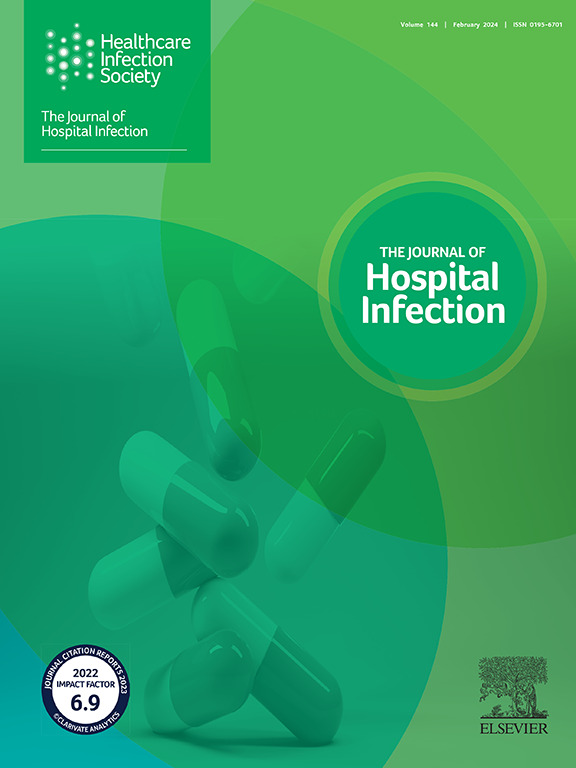Drain decontamination using in-situ-generated ozone
IF 3.9
3区 医学
Q1 INFECTIOUS DISEASES
引用次数: 0
Abstract
Background
Sink drains can be a significant source of microbial contamination in healthcare settings due to aerosolization and splashback of pathogens caused by flowing water.
Aim
To demonstrate a method of ozone disinfection of drains using a novel generation process that suppresses pathogen growth in the drain sump, whether planktonic or dwelling in biofilms.
Methods and results
Highly biocidal ozone was generated in situ in the drain using the ambient air sealed between the water trap and a portable cold plasma device. Safety mechanisms in the device ensured that the operator was not exposed to ozone. Subsequent bacterial recovery illustrated an approximate bioburden reduction of 5 log10 for biofilms in the drain itself, and 6 log10 for biofilms located in the sink.
Conclusions
Plasma-generated ozone is a safe and effective method for controlling bioburden in periodically wetted, otherwise inaccessible pipework and drains.
Significance and impact of study
The portable ozone disinfection system described has demonstrated potential for controlling the escape of pathogens from drains. Compared with conventional liquid-based disinfection techniques, the portable ozone disinfection system has the following advantages: (i) a gaseous biocide can reach all surfaces inside the treatment target, without any restriction from orientation or surface tension; (b) ozone is effective in reducing planktonic and biofilm bacterial counts; and (c) ozone is generated at the point of use from air, using minimal electrical power, requiring no chemical delivery or storage, and producing no toxic residues.
求助全文
约1分钟内获得全文
求助全文
来源期刊

Journal of Hospital Infection
医学-传染病学
CiteScore
12.70
自引率
5.80%
发文量
271
审稿时长
19 days
期刊介绍:
The Journal of Hospital Infection is the editorially independent scientific publication of the Healthcare Infection Society. The aim of the Journal is to publish high quality research and information relating to infection prevention and control that is relevant to an international audience.
The Journal welcomes submissions that relate to all aspects of infection prevention and control in healthcare settings. This includes submissions that:
provide new insight into the epidemiology, surveillance, or prevention and control of healthcare-associated infections and antimicrobial resistance in healthcare settings;
provide new insight into cleaning, disinfection and decontamination;
provide new insight into the design of healthcare premises;
describe novel aspects of outbreaks of infection;
throw light on techniques for effective antimicrobial stewardship;
describe novel techniques (laboratory-based or point of care) for the detection of infection or antimicrobial resistance in the healthcare setting, particularly if these can be used to facilitate infection prevention and control;
improve understanding of the motivations of safe healthcare behaviour, or describe techniques for achieving behavioural and cultural change;
improve understanding of the use of IT systems in infection surveillance and prevention and control.
 求助内容:
求助内容: 应助结果提醒方式:
应助结果提醒方式:


